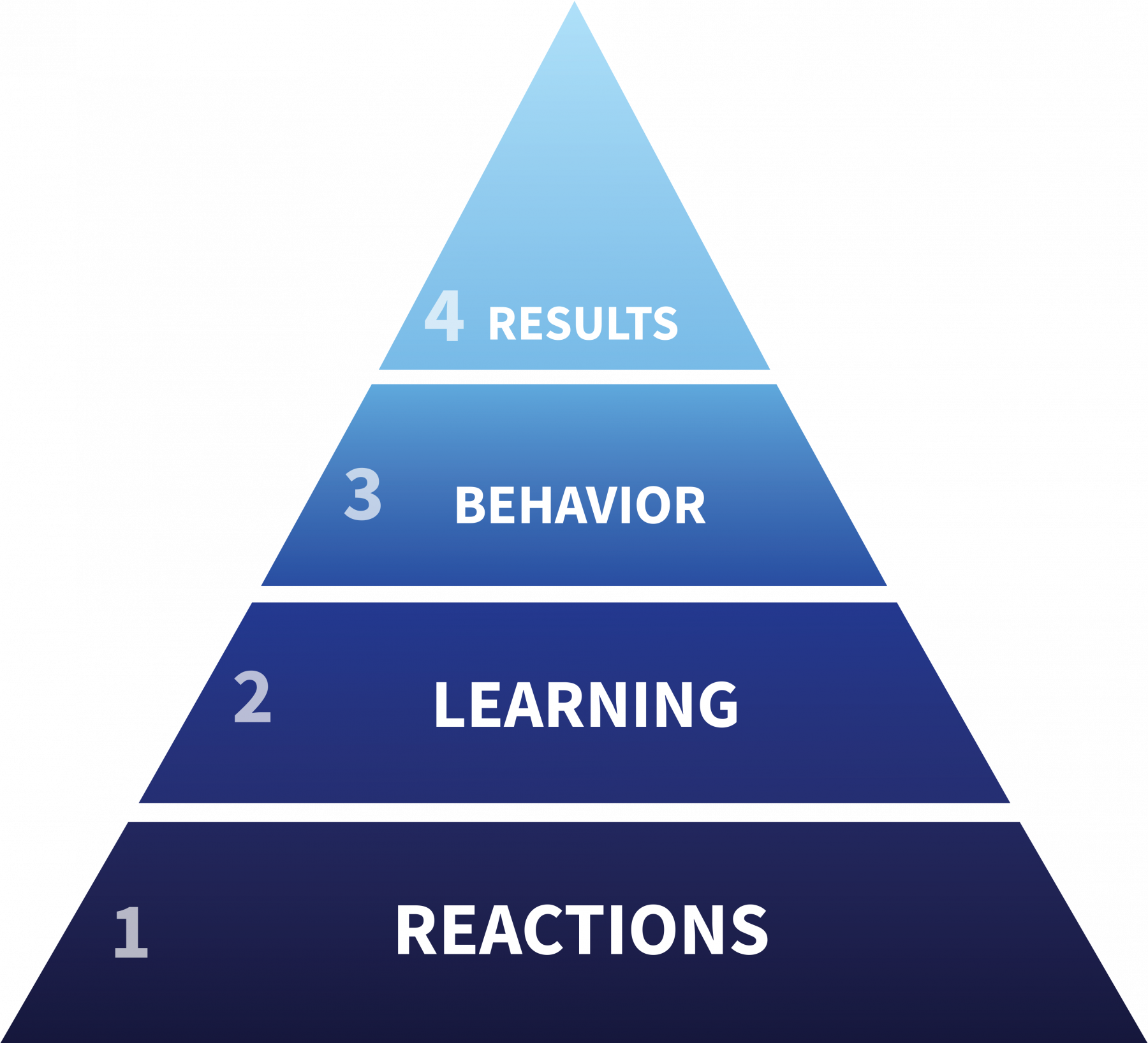Kirkpatrick is credited with creating the kirkpatrick model, or the four levels of training evaluation, in the 1950s when he used it as the basis of the ph.d. As you move from levels 1 through 4, the evaluation techniques become increasingly complex and the data generated becomes increasingly valuable.
Ian Jones Field of IT The Domain of Evaluation
Kirkpatrick’s four levels of evaluation model evaluates the effectiveness of the training at four different levels with each level building on the previous level (s).

Kirkpatrick's 4 levels of learning. By sreya dutta march 14, 2009. Surveymonkey embedded at the end of the course. This model provides a framework for both designing and evaluating training, depending on the order you work through the levels.
Reaction, learning, behavior, and results. It evaluates how students react to the teaching by evaluating the student’s thoughts. Donald kirkpatrick (later joined by his sons with the same last name and similar profession) was a university professor, author (books and journal publishings), and past president of the american society of training & development or astd.
Discussion guides and checklists for the supervisor and/or sme to evaluate whether they can apply the concepts on the job. The model includes four levels of evaluation, and as such, is sometimes referred to as 'kirkpatrick's levels or the four levels.. Using kirkpatrick’s 4 levels can generate valuable information and provide a snapshot of staff perceptions.
Kirkpatrick’s 4 levels have been used as a base for many adaptations to include the 4 levels of learning, training, and evaluation. Here is what we are doing for our clients. 1] reaction, 2] learning, 3] behavior on transfer, and 4] results.
As said by donald kirkpatrick himself, “ each program needs to be assessed at this. Level 4 is where this is tested. The kirkpatrick model of evaluation explained.
The model grew through organic worldwide usage and became the. Get free kirkpatrick s four levels of In this post, we’ll walk you.
Pre and post tests with review questions throughout the course. These are the four levels through which to design training programs and measure their effectiveness, according to kirkpatrick’s four levels of training evaluation model. Kirkpatricks’s model makes use of a range of tools and methods for collecting and analysing data at each of the four levels.
The evaluation of learning is vital, as learning can lead to changes in behavior (kirkpatrick & kirkpatrick, 2006, p. One of the most widely used development tools is the kirkpatrick 4 levels of learning evaluation model. • level 4 principles, techniques and timing.
To this day, it is still one of the most popular models to evaluate training program. • the four levels and their history. It measures learning against the organization’s business outcomes, i.e your kpis established at the start of the training.
Dissertation entitled, “evaluating human relations programs for industrial foremen and supervisors.”. He talks about the four levels of evaluation of a course: Learning to behavior managing change effectively encyclopedia of evaluation training on trial the four levels of evaluation—an page 2/48.
These evaluations will tell you if the student had engaged enough and their experience was fruitful. The kirkpatrick model consists of 4 levels: Behavior level three, according to jones, fraser, and randall (2018), is identified as “the most important of the four levels because training alone will not generate changes in practice or outcomes” (p.
Evaluation level and type evaluation description and • defining your level 4 results. The result level of the kirkpatrick model, commonly regarded as the primary goal of the program, is dedicated to measuring the overall success of a training program.
Kirkpatrick's 4 levels categorizes the ways of evaluation into four levels: Donald kirkpatrick coined this model in 1975 and it could most probably be outdated. The standard formula for measuring the roi of training is as follows:
The objective for this level is plain and simple; All four levels of evaluation have their own elements, significance, benefits, and challenges. Introduction to the kirkpatrick model.
Donald kirkpatrick first published his ideas about training evaluation in 1959, but it wasn. This diagram is the same format as the one above but with more detail and explanation: This model is globally recognized as one of the most effective evaluations of training.
The first level, reaction, asks what the audience thought of the information session as a whole. The kirkpatrick model, also known as kirkpatrick’s four levels of training evaluation, is a key tool for evaluating the efficacy of training within an organization.